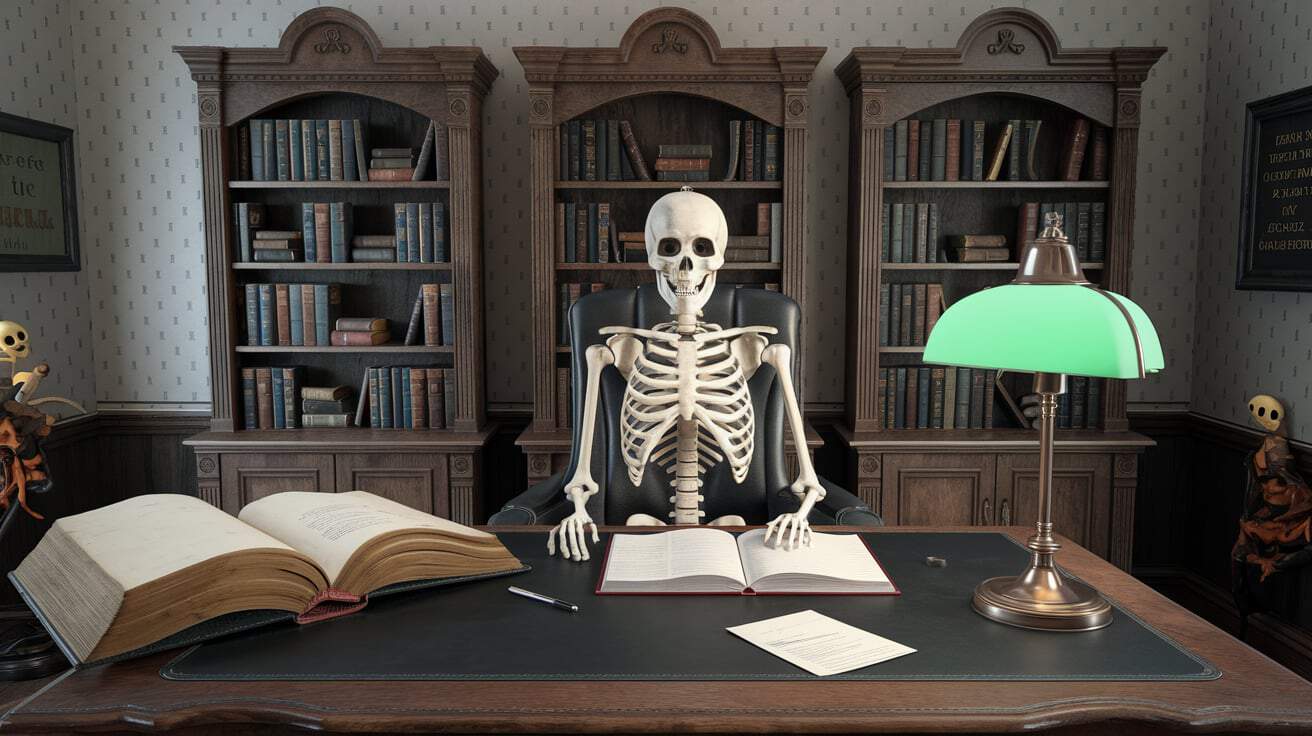Editor’s Note: This article is based on Rebecca Whitman Koford’s excellent RootsTech 2021 presentation series “The Dead and the Dying.” This is my interpretation of her presentation for our Halloween special.
Every death record tells a story. Every cemetery holds secrets. And every funeral home guards memories that could transform your family research.
But here’s the problem: Most genealogists are doing it wrong.
Dead wrong (pun intended).
Death Certificates: The Gateway to Your Past (That Most People Misunderstand)
Here’s something wild that’ll blow your mind: Until 1933, there wasn’t even a federal requirement for states to track deaths. Zero. Nada.
Why? Because death certificates weren’t created for us genealogy nerds. They were created for:
- Population statistics
- Disease control
- City planning
But here’s where it gets interesting. These records are absolute gold mines of information. They can reveal:
- Birth information
- Parents’ names
- Occupation
- Cause of death
- Burial location
- And sometimes, way more
The secret weapon most people miss? The informant.
Here’s the deal: The person who provided the information for that death certificate is your key to understanding how accurate it might be. Think about it:
- Close family member? You’re probably good.
- Hospital staff? Maybe not so much.
- Random neighbor? Take it with a massive grain of salt.
Pro tip that nobody talks about: Look for death certificates of your ancestor’s siblings. Why? Because sometimes they’ll have different informants who knew different pieces of the family puzzle.
Alternative Death Records: The Hidden Treasures Nobody’s Looking For
Listen up, because this is where most people drop the ball. Death certificates aren’t the only game in town. Not even close.
Here’s what you’re missing:
- Death registers (some cities kept these as early as 1848)
- Burial permits (goldmines for tracking movement between cities)
- City directories (look for those “widow of” entries)
- Mortality schedules (1850-1885 is your sweet spot)
- Voter registration records (yeah, they actually recorded deaths to prevent voter fraud)
- Probate and court records (sometimes these are the only proof you’ll find)
Want a ninja move? Check the city directories year after year. When a husband suddenly disappears and his wife shows up as “widow of” – boom. You’ve just narrowed down your death date search.
Just know that sometimes women can lie about being a widow if they’re separated from their husband without a formal divorce.
Cemetery Offices: The Untapped Goldmine of Family History
This is where it gets good. Really good.
Cemetery offices are private businesses sitting on treasure troves of information. But here’s the thing most people screw up: they don’t know how to approach them.
Here’s your gameplan:
- Call ahead. Always.
- Be ridiculously kind to the staff
- Offer to pay for copies
- Make an appointment
- Come prepared with specific questions
What can you find? Hold onto your hat:
- Plot diagrams
- Burial cards
- Death dates
- Family connections
- Plot ownership details (massive clue for finding relatives)
- Undertaker information
- And sometimes, full biographical information
Real talk: Some of my biggest breakthroughs came from cemetery office records nobody else bothered to check.
Read next: How to Find Where Someone is Buried
The Funeral Home Factor: Your Secret Weapon for Family Research
Funeral homes are businesses. Private businesses. Which means they’re not required to share anything with you.
But here’s where it gets interesting.
Many modern funeral homes have bought out older businesses and kept their records. Those records can include:
- Death certificates
- Obituaries
- Wills
- Lawyers’ letters
- Contract details
- Family names
- Religious identifiers
- Military service information
- Plot details
- Personal identifiers
How do you find the funeral home your ancestor used?
- Check the death certificate
- Look for funeral director advertisements from that era
- Search city directories
- Check the census for undertakers
- Work backwards from the cemetery office
- Look up other family members who died in the area (families often used the same funeral home)
Pro tip: Search WorldCat for funeral home records. You’d be shocked how many have been donated to libraries and historical societies.
Cemetery Symbolism: The Secret Language of Your Ancestors
This is where it gets fascinating. Your ancestors spoke through symbols, and most people have no clue how to read them.
Here’s your crash course in cemetery symbolism:
Early Symbols (1700s):
- Skulls (Puritan attitudes about death)
- Crossbones
- Hour glasses
- Death’s heads
Victorian Era Symbols:
- Angels (intermediaries between God and man)
- Doors (hope and transition)
- Cut trees (life cut short)
- Weeping willows (tears and immortality)
- Urns (immortality or sorrow)
- Roses (love and beauty)
- Lambs (usually on children’s graves)
Organizational Symbols:
- Masonic emblems
- Military insignia
- Religious symbols
- Occupational tools
Pro tip: Different religious denominations used different cross styles. This can help you confirm family religious affiliations.
The Digital Trap That’s Killing Your Research
Here’s the brutal truth that nobody wants to hear: if you’re only searching online, you’re missing about twice as many records as you’re finding.
Let that sink in.
The real records are:
- In physical repositories
- On microfilm in libraries
- In cemetery offices
- In funeral home files
- In courthouse basements
- In historical society collections
Here’s what real researchers do:
- Start online (sure, why not?)
- Make a list of offline repositories
- Plan research trips
- Contact facilities ahead of time
- Budget for copies and fees
- GET OFF THEIR BUTTS AND GO LOOK
Practical Tips for Cemetery Visits
When you’re ready to hit the cemetery (and you better be after reading this), here’s what you need:
Equipment:
- Soft toothbrush (nothing harder!)
- Regular aluminum foil (not heavy duty)
- Camera
- Reflective screen
- Notebook
- Insect repellent
What NOT to bring:
- Shaving cream
- Chalk
- Wire brushes
- Cleaning chemicals
- Paint (yes, people actually do this)
Pro Photography Tips:
- Take full images first
- Get close-ups
- Shoot from the side (catches more detail)
- Use your reflector screen
- Avoid photographing your own shadow
- Crouch down to stone level
The Most Important Lesson You’ll Ever Learn About Genealogy
Here’s what separates the amateurs from the pros:
Real genealogists understand that death records aren’t just about documenting endings. They’re about:
- Discovering beginnings
- Understanding relationships
- Uncovering stories
- Finding connections
- Honoring lives
As Thornton Wilder said, “The highest tribute to the dead is not grief but gratitude.”
Your Action Plan (Because Knowledge Without Action is Useless)
- Start with death certificates:
- Order copies for your direct ancestors
- Get siblings’ certificates too
- Pay attention to informants
- Hit the cemetery offices:
- Call ahead
- Be prepared to pay
- Ask about plot records
- Look for family connections
- Track down funeral homes:
- Research historical funeral businesses
- Contact modern companies that bought them
- Check libraries for donated records
- Document everything:
- Photograph stones properly
- Record symbols
- Note nearby burials
- Map locations
- Go offline:
- Plan repository visits
- Budget for research trips
- Contact facilities ahead of time
- Be patient and persistent
Remember: Real researchers go where the records are. They don’t wait for records to come to them.
Because at the end of the day, your ancestors’ stories are waiting to be discovered. They’re hidden in death certificates, carved into stones, and filed away in cemetery offices.
The question is: Are you willing to do what it takes to find them?



Good article. May I add one thing to your research kit. It can be the difference between ok readable pictures and one that is good.
Take a bottle of water. Save a pop or juice bottle and fill it up.
Some cemeteries do give you access to water or a way to transport it through the cemetery.
AFTER, you take all your pictures upon arrival wet the stone and take a few more. The water often highlights parts of the inscription and dates otherwise illegible.
My husband and I made a trip last year to 4 cemeteries in Philadelphia to locate the graves of his ancestors, which was very interesting. However, the problem you may encounter with some old cemeteries is that all or part is not well-maintained. So while you may have enough information to know roughly where your ancestor is buried, it may be so overgrown that you cannot possibly find the gravestones. Also, sometimes the gravestone consists simply of the family surname flat in the ground, not an upright marker. As for cemetery offices, some of these sites are no longer active (hence the disrepair) so you will have to seek out organizations such as “Friends of **** Cemetery” in which case it may take a bit of sleuthing and persistence to locate a person who has access to records.
Great article Marc. I think you touched upon everything a beginning genealogist, and some of us old timers need to know about death. Good info on cemetery and funeral home records.